Synthomer Bundle
How did a 19th-century trading house become a global chemical leader?
Embark on a fascinating journey through the Synthomer SWOT Analysis, a story of transformation and strategic evolution. From its humble beginnings in 1863 as a trading company in Calcutta, this Synthomer company has navigated diverse industries before becoming a powerhouse in specialty chemicals. Discover the key milestones that shaped the Synthomer of today, a UK based company with a global footprint.
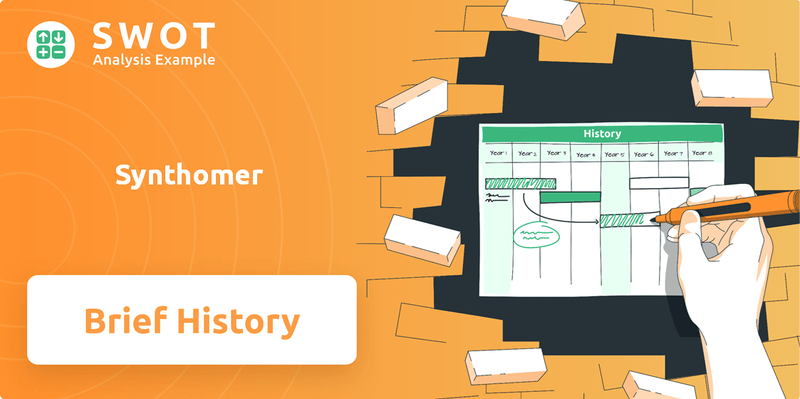
This brief history of Synthomer plc unveils a tale of adaptability and innovation. Explore how this chemical company strategically shifted its focus to become a leading polymer supplier. Understanding Synthomer's early years and its subsequent growth provides valuable insights into its current market position and future potential, offering a compelling case study for investors and business strategists alike.
What is the Synthomer Founding Story?
The story of the Synthomer company begins with a long and winding path, tracing back to the 19th century. Understanding the Synthomer history requires going back to its roots in the business ventures of the Yule family.
The tale starts with Andrew Yule & Co. in Calcutta and George Yule & Co. in London. These early ventures set the stage for what would eventually become the Synthomer company we know today. The evolution from these initial enterprises to the global chemical company is a story of strategic shifts and adaptations.
The Synthomer journey showcases a transformation from managing industrial and plantation undertakings to its current focus on specialty chemicals. This transition highlights the company's ability to evolve and adapt to changing market conditions.
The origins of Synthomer can be traced back to 1863, with Andrew Yule & Co. established in Calcutta by Andrew Yule, and George Yule & Co. in London by his brother George Yule. George Yule & Co. acted as the British agency for Andrew Yule & Co.
- In 1919, both entities were sold to J.P. Morgan & Co. and Morgan Grenfell & Co., transitioning from partnerships to private limited companies.
- Thomas Catto was sent to India to manage Andrew Yule & Co., while Sir David Yule remained chairman.
- In 1920, Thomas Catto and David Yule renamed George Yule and Company to Yule, Catto & Company Ltd.
- The initial focus was on managing industrial and plantation ventures in India and Asia, with the London entity serving as an agent.
The company, controlled by the family of the first Lord Catto, built a portfolio of investments, mainly in British companies. A key strategic move occurred in 1969 when Yule, Catto & Co. sold its stake in Andrew Yule & Co. to the Indian government. This decision was influenced by factors such as increased taxation, the devaluation of the Indian rupee, and the abolition of the managing agency system. This divestment was a pivotal moment, paving the way for the company's future in specialty chemicals. For more insights into how Synthomer approaches its market, you can explore the Marketing Strategy of Synthomer.
Synthomer SWOT Analysis
- Complete SWOT Breakdown
- Fully Customizable
- Editable in Excel & Word
- Professional Formatting
- Investor-Ready Format
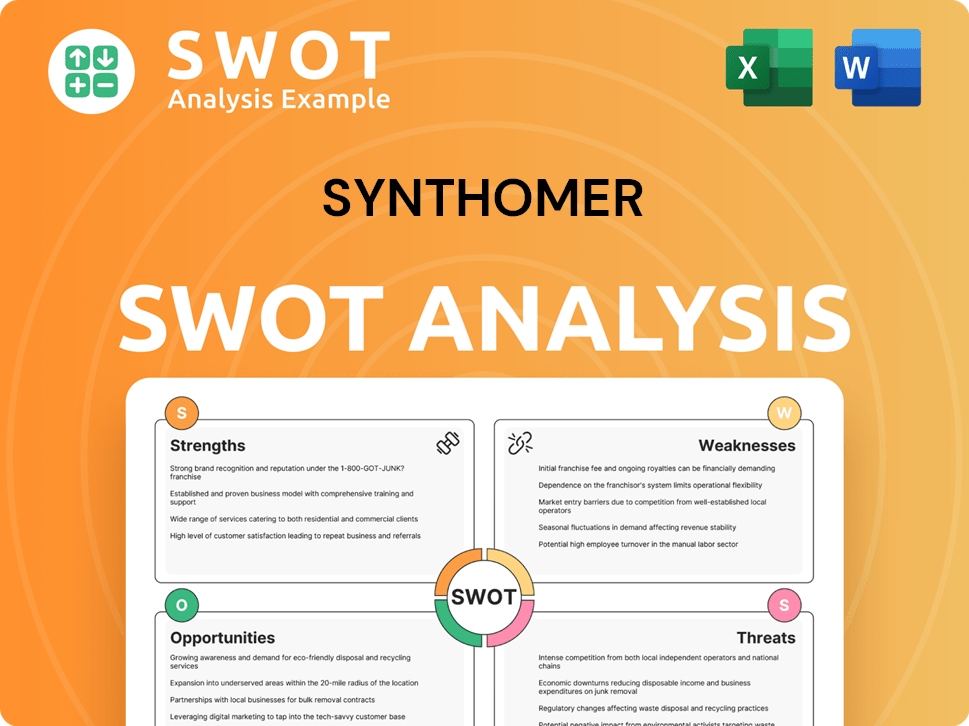
What Drove the Early Growth of Synthomer?
The early growth and expansion of Synthomer, formerly known as Yule Catto & Co., showcases a strategic evolution from diverse holdings to a specialty chemical focus. This transformation involved significant acquisitions and strategic shifts, laying the groundwork for its current position as a key player in the polymer industry. The company's history is marked by a series of acquisitions and divestitures, each contributing to its specialization in polymer chemistry.
In 1971, Yule Catto & Co. Limited merged with Malaya General Company Limited, a rubber plantation owner, with the latter becoming the holding company and adopting the Yule Catto & Co. Limited name. This was followed by the acquisition of Revertex Chemicals in 1980, marking a shift towards specialty chemicals. The acquisition of Holliday Chemical Holdings plc in 1998 further expanded its chemical portfolio to include active pharmaceutical chemicals, pigments, and dyes.
From 2006 to 2008, Yule Catto & Co. plc divested various businesses to concentrate on specialty polymers. This strategic streamlining was a crucial step in its transformation. The acquisition of PolymerLatex in 2011, a German-based specialty polymer manufacturer, further solidified its position in the polymer market. The company officially changed its name to Synthomer in 2012.
Key milestones in the
The early years of the
Synthomer PESTLE Analysis
- Covers All 6 PESTLE Categories
- No Research Needed – Save Hours of Work
- Built by Experts, Trusted by Consultants
- Instant Download, Ready to Use
- 100% Editable, Fully Customizable
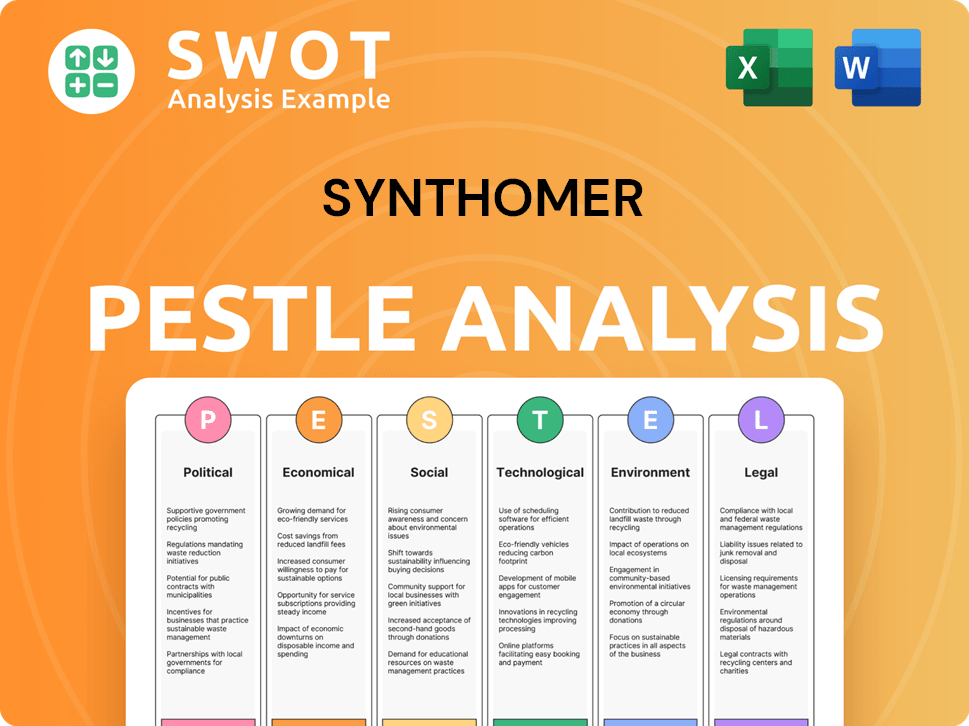
What are the key Milestones in Synthomer history?
The Synthomer company has a history marked by significant milestones in the chemical industry, evolving from its early years to a global presence. This UK based company has consistently adapted to market changes and expanded its portfolio through strategic acquisitions and innovations.
| Year | Milestone |
|---|---|
| 2018 | Received the Future Textile Award for Litex QuickShield™ technology. |
| 2020 | Acquired OMNOVA Solutions for an enterprise value of $824 million. |
| October 2021 | Acquired Eastman Chemical's adhesive activities for $1 billion. |
| 2024 | Received the London Stock Exchange's Green Economy Mark. |
| April 2024 | Divested the Compounds business. |
| May 2025 | Divested William Blythe Limited for £30 million. |
Synthomer has consistently focused on innovation, with recent developments including SyNovus™ Plus, a recyclable nitrile product, and Lipolan™ TERRA, designed to enhance latex foam sustainability. The company has also introduced Suncryl™ HP 114, a water-based polymer with over 56% bio-based raw material.
A high-performance nitrile product offering high-performance barrier protection while being recyclable and reducing greenhouse gas emissions.
Designed to enhance the sustainability of latex foam by reducing its carbon footprint.
A water-based polymer containing over 56% bio-based raw material.
Recognized for its environmental benefits through emission reduction, earning the company the Future Textile Award.
Dedicated to exploring new chemistries to meet evolving market needs, focusing on sustainable raw materials, lower environmental impacts, and enhanced product performance.
Launched in early 2025, these products have a lower carbon footprint, reflecting the company's commitment to sustainability.
Synthomer has faced challenges, including increased debt from acquisitions and fluctuating market conditions. The company responded with strategic actions to manage debt and reposition its portfolio, including the divestment of non-core businesses and reducing its manufacturing sites from 43 to 31 since 2022.
Major acquisitions, such as OMNOVA Solutions and Eastman Chemical's adhesive activities, led to a substantial increase in debt, impacting financial performance.
Deteriorating market conditions, high inflation, and rising interest rates following acquisitions temporarily weakened the Group's earnings performance.
The company divested non-core businesses, such as the Compounds business and William Blythe Limited, to focus on high-value, high-growth specialty chemical markets.
Synthomer reduced its manufacturing sites from 43 to 31 since 2022, streamlining operations and improving efficiency.
Despite challenges, Synthomer reported robust financial progress in 2024, with a 5.1% increase in revenue at constant currency and significant improvements in EBITDA.
Synthomer partnered with Henkel to cut carbon emissions in adhesives, demonstrating a commitment to sustainable practices.
Synthomer Business Model Canvas
- Complete 9-Block Business Model Canvas
- Effortlessly Communicate Your Business Strategy
- Investor-Ready BMC Format
- 100% Editable and Customizable
- Clear and Structured Layout
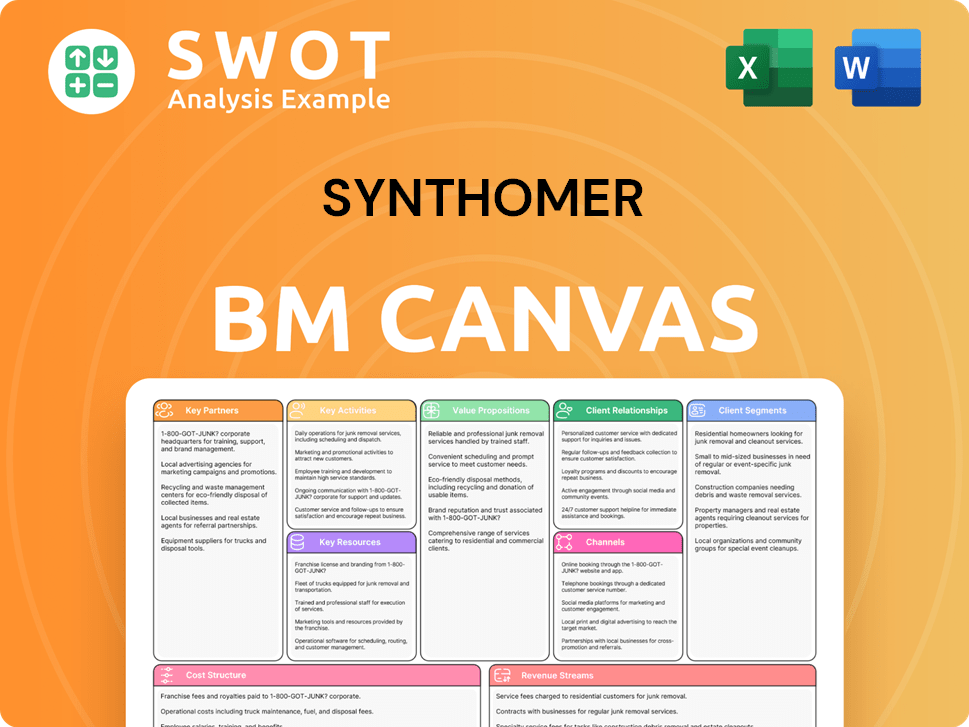
What is the Timeline of Key Events for Synthomer?
The Synthomer history is a story of strategic evolution and expansion within the chemical industry. From its origins in the 19th century to its current standing as a global chemical company, Synthomer, a UK based company, has consistently adapted and grown through strategic acquisitions and a focus on specialty chemicals and polymer products.
| Year | Key Event |
|---|---|
| 1863 | Andrew Yule & Co. and George Yule & Co. are founded, marking the beginning of the company's trading activities. |
| 1920 | Yule, Catto & Company Ltd. is incorporated. |
| 1971 | Yule Catto & Co. Limited merges with Malaya General Company Limited and is listed on the London Stock Exchange. |
| 1980 | Acquisition of Revertex Chemicals Limited, signaling a move towards specialty chemicals. |
| 1998 | Acquisition of Holliday Chemical Holdings plc, broadening its chemical portfolio. |
| 2006-2008 | Divestiture of various businesses to concentrate on specialty polymer supply. |
| 2011 | Acquisition of PolymerLatex, strengthening its specialty polymer manufacturing capabilities. |
| 2012 | The company changes its name to Synthomer plc. |
| 2019 | Announces the acquisition of OMNOVA Solutions for an enterprise value of $824 million. |
| 2020 | Completes the acquisition of OMNOVA Solutions. |
| 2021 | Acquires Eastman Chemical adhesive activities for $1 billion. |
| 2022 | A new management team sets out a refreshed strategy for growth and margin improvement. |
| 2024 (March) | Publishes its 2024 annual report, showing robust financial progress with a 5.1% increase in revenue at constant currency and a 9.2% increase in EBITDA at constant currency. |
| 2025 (January) | Unveils a new innovation center in Shanghai. |
| 2025 (February) | Establishes ISCC PLUS certified value chain to manufacture bio-based nitrile latexes for the glove industry. |
| 2025 (April) | Completes the divestment of William Blythe limited for £30 million. |
Looking to 2025, Synthomer anticipates £25-30 million in benefits from self-help and strategic plans. The company is focused on driving further earnings progress and positive Free Cash Flow.
Synthomer aims to more than double its recent earnings levels in the medium term. This will be achieved through continued self-help actions, end-market volume recovery, and strategic delivery.
A core part of the strategy is to increase the share of specialty chemicals to 70% from the current 55%/45% split between specialty and commodity chemicals. The company is also emphasizing targeted investments in innovation with a focus on product sustainability.
Synthomer's 2030 decarbonisation targets have been approved by the Science Based Targets initiative, aiming for a 46.2% reduction in absolute Scope 1 and 2 emissions by 2030, using 2019 as the base year. The company is also exploring the use of green hydrogen at key European sites, with a long-term goal of net-zero emissions by 2050.
Synthomer Porter's Five Forces Analysis
- Covers All 5 Competitive Forces in Detail
- Structured for Consultants, Students, and Founders
- 100% Editable in Microsoft Word & Excel
- Instant Digital Download – Use Immediately
- Compatible with Mac & PC – Fully Unlocked
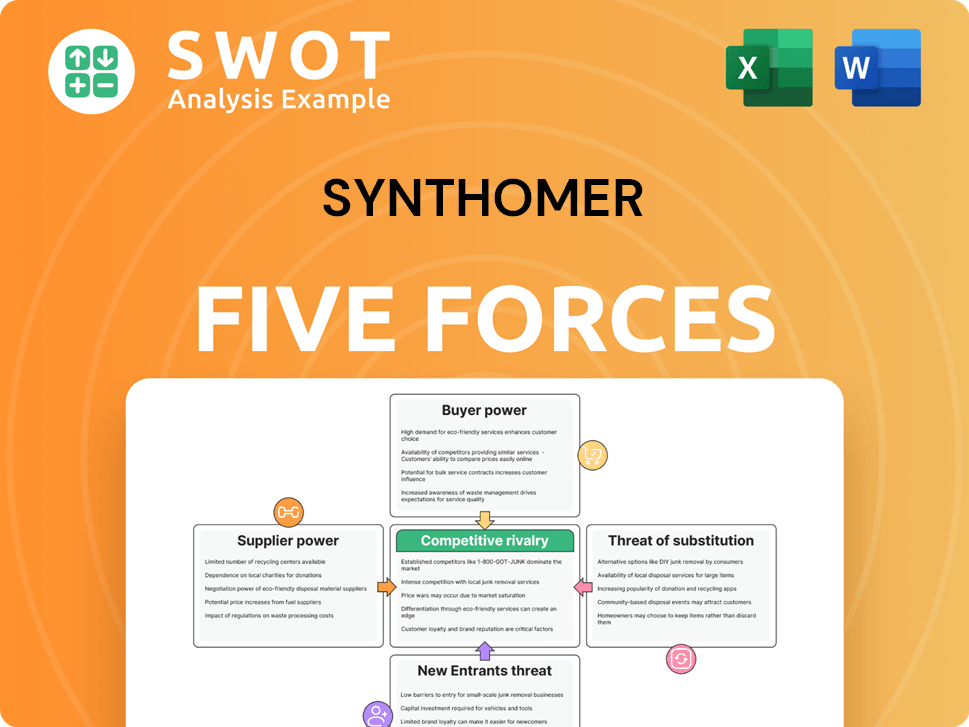
Related Blogs
- What is Competitive Landscape of Synthomer Company?
- What is Growth Strategy and Future Prospects of Synthomer Company?
- How Does Synthomer Company Work?
- What is Sales and Marketing Strategy of Synthomer Company?
- What is Brief History of Synthomer Company?
- Who Owns Synthomer Company?
- What is Customer Demographics and Target Market of Synthomer Company?
Disclaimer
All information, articles, and product details provided on this website are for general informational and educational purposes only. We do not claim any ownership over, nor do we intend to infringe upon, any trademarks, copyrights, logos, brand names, or other intellectual property mentioned or depicted on this site. Such intellectual property remains the property of its respective owners, and any references here are made solely for identification or informational purposes, without implying any affiliation, endorsement, or partnership.
We make no representations or warranties, express or implied, regarding the accuracy, completeness, or suitability of any content or products presented. Nothing on this website should be construed as legal, tax, investment, financial, medical, or other professional advice. In addition, no part of this site—including articles or product references—constitutes a solicitation, recommendation, endorsement, advertisement, or offer to buy or sell any securities, franchises, or other financial instruments, particularly in jurisdictions where such activity would be unlawful.
All content is of a general nature and may not address the specific circumstances of any individual or entity. It is not a substitute for professional advice or services. Any actions you take based on the information provided here are strictly at your own risk. You accept full responsibility for any decisions or outcomes arising from your use of this website and agree to release us from any liability in connection with your use of, or reliance upon, the content or products found herein.